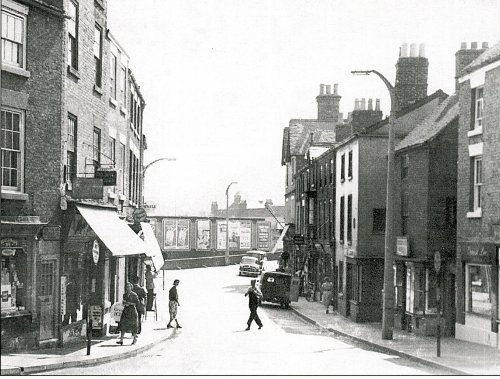The brickwork visible on the side of the building is rare in the Midlands. It is a version of Flemish Bond known as Flemish Garden Wall Bond.
Dig Street appears to be a corruption of Ditch Street. It is possibly on the line of a shallow tributary rivulet connecting into the Henmore Brook, and may have acted as a drain from the market place into the Henmore. Being slightly narrower than Church Street, Dig Street did not attract the larger townhouses and is therefore on a more diminutive scale than Church Street.
The majority of the properties on Dig Street were constructed from red brickwork with sash windows and clay tiled roofs. Unlike nearby Church Street, nearly every property on Dig Street has a shop frontage making it primarily a commercial street.
The Cheddar Gorge, 9 Dig St., was probably built in the late 18th Century. However, the two projecting bay shopfront windows with collonette pilasters and an original decorative fanlight over the door most likely date from the early 19th Century. This shopfront is of particular architectural and historic value as it is a rare example in Ashbourne of a surviving shopfront from this period. The brickwork visible on the side of the building is also interesting and rare in the Midlands, Flemish Garden Wall Bond. There are 3 stretchers (long-side of the brick) to every header (end of the brick). Despite its name, this bond was not used for garden walls but for solid walls on buildings, which needed to look good from both sides. It is often known as Sussex Bond as it is mainly found on buildings in Sussex and Hampshire.




